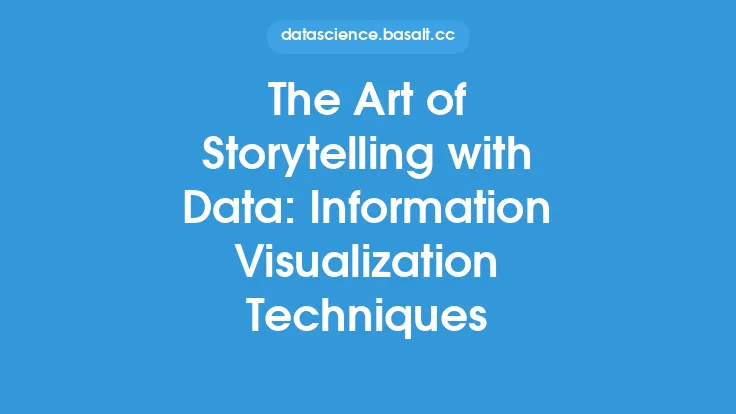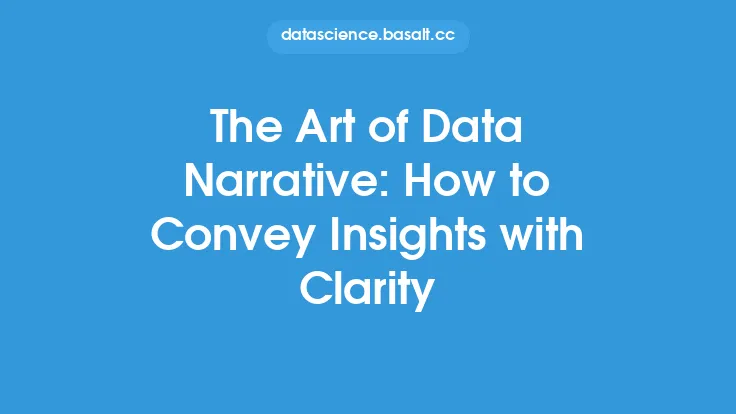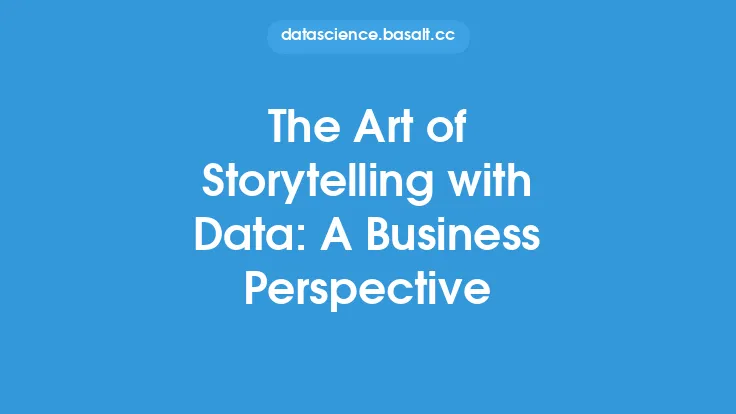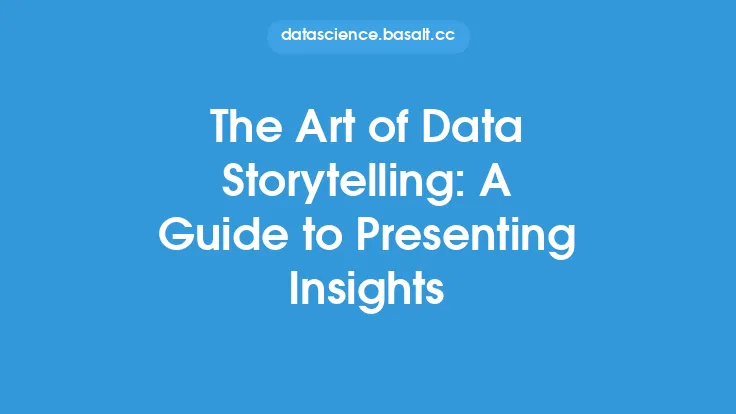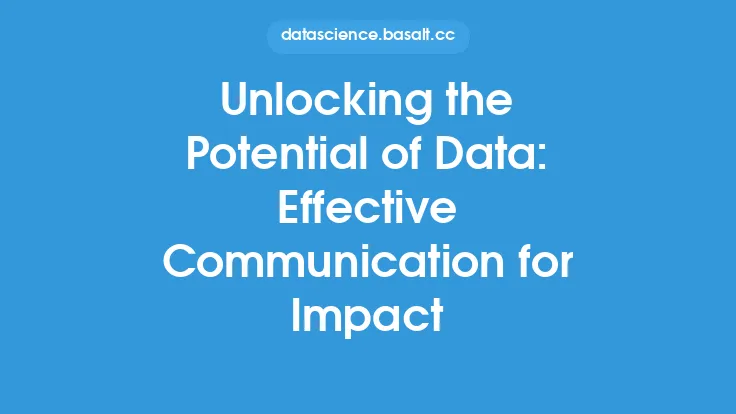Data storytelling is a powerful tool used to convey insights and trends from data in a way that is easy to understand and engaging for the audience. It involves using narrative techniques to present data in a compelling and meaningful way, making it more accessible and memorable for the audience. The art of data storytelling requires a combination of technical skills, such as data analysis and visualization, and soft skills, such as communication and creativity.
Introduction to Data Storytelling Techniques
Data storytelling techniques are used to craft engaging narratives that convey insights and trends from data. These techniques include the use of visualizations, such as charts and graphs, to present data in a clear and concise manner. They also involve the use of storytelling principles, such as setting, characters, and plot, to create a narrative that is engaging and easy to follow. Additionally, data storytelling techniques involve the use of interactive elements, such as filters and drill-down capabilities, to allow the audience to explore the data in more detail.
Understanding the Audience
Understanding the audience is a critical component of data storytelling. The audience's level of technical expertise, their interests, and their goals all play a role in determining the type of narrative that will be most effective. For example, a technical audience may require more detailed and complex visualizations, while a non-technical audience may require simpler and more intuitive visualizations. Additionally, the audience's level of engagement and motivation can be influenced by the use of storytelling principles, such as emotional appeals and vivid imagery.
Crafting a Narrative
Crafting a narrative is a key component of data storytelling. This involves using storytelling principles, such as setting, characters, and plot, to create a narrative that is engaging and easy to follow. The narrative should be structured in a logical and coherent way, with a clear beginning, middle, and end. The use of visualizations, such as charts and graphs, can help to illustrate key points and trends in the data, making the narrative more engaging and memorable.
Using Visualizations
Visualizations are a critical component of data storytelling. They can be used to present data in a clear and concise manner, making it easier for the audience to understand and interpret. There are many different types of visualizations that can be used, including charts, graphs, maps, and infographics. The choice of visualization will depend on the type of data being presented, as well as the audience's level of technical expertise and their interests.
Creating Interactive Stories
Creating interactive stories is a key component of data storytelling. This involves using interactive elements, such as filters and drill-down capabilities, to allow the audience to explore the data in more detail. Interactive stories can be created using a variety of tools, including data visualization software and programming languages, such as Python and R. The use of interactive elements can help to increase the audience's level of engagement and motivation, making the narrative more memorable and impactful.
Best Practices for Data Storytelling
There are several best practices that can be used to improve the effectiveness of data storytelling. These include keeping the narrative simple and focused, using clear and concise language, and avoiding technical jargon and complex terminology. Additionally, the use of storytelling principles, such as emotional appeals and vivid imagery, can help to increase the audience's level of engagement and motivation. Finally, the use of interactive elements, such as filters and drill-down capabilities, can help to increase the audience's level of exploration and discovery.
Technical Considerations
There are several technical considerations that must be taken into account when creating data stories. These include the choice of data visualization software, the use of programming languages, such as Python and R, and the integration of data from multiple sources. Additionally, the use of data governance and data quality techniques, such as data validation and data cleansing, can help to ensure that the data is accurate and reliable. Finally, the use of security and authentication techniques, such as encryption and access controls, can help to protect the data and prevent unauthorized access.
Measuring the Effectiveness of Data Storytelling
Measuring the effectiveness of data storytelling is a critical component of the data storytelling process. This involves using metrics, such as engagement and motivation, to evaluate the impact of the narrative on the audience. Additionally, the use of feedback mechanisms, such as surveys and focus groups, can help to identify areas for improvement and provide insights into the audience's level of understanding and retention. Finally, the use of analytics tools, such as Google Analytics, can help to track the audience's level of engagement and motivation, providing insights into the effectiveness of the narrative.
Future of Data Storytelling
The future of data storytelling is exciting and rapidly evolving. The use of emerging technologies, such as artificial intelligence and machine learning, is expected to play a major role in the development of data storytelling. Additionally, the use of new data sources, such as social media and IoT devices, is expected to provide new opportunities for data storytelling. Finally, the use of virtual and augmented reality technologies is expected to provide new ways to present data in a more immersive and engaging way, making data storytelling even more effective and impactful.
